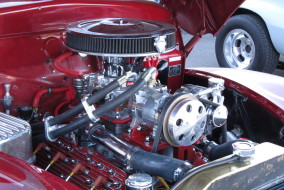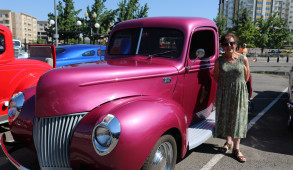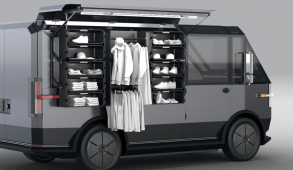The purpose of the cooling system in your car’s engine is to keep the engine at its most efficient operating temperature, at all speeds and under all operating conditions.
During the combustion of the air-fuel mixture in the engine cylinders, temperatures of 4000 degrees or higher may be reached by the burning of gases. Some of this heat is absorbed by the cylinder walls, cylinder head, and pistons. They, in turn, must be provided with some means of cooling so that they will not get too hot. Cylinder-wall temperatures must not go higher than about 400-500 degrees. Temperatures higher than this cause the lubricating-oil film to break down and lose the lubricating properties. However, the engine operates best at temperatures as close as possible to the limits imposed by oil properties.
Cooling systems are designed to remove about one-third of the heat produced in the combustion chambers by the burning of the air-fuel mixture. One-third of the heat leaves the engine as exhaust gas through the exhaust system. Generally, only about one-third of the heat of combustion is used by the engine to produce power.
The engine is even more inefficient while cold. Therefore the cooling system includes devices that prevent normal cooling action during engine warm-up. These devices (thermostat, engine fan, heater core, sensors, etc) allow the engine parts to reach their normal operating temperature more quickly. This shortens the inefficient cold operating time. When the engine reaches normal operating temperature, the cooling system begins to function. The cooling system cools the engine rapidly when it is hot, and not at all, or slowly, when the engine is cold or warming up.
There are two types of cooling systems used on automobile engines,. They are air cooling and liquid. Today most automobile engines are liquid cooled. Most engines in airplanes, snowmobiles, motorcycles, power lawnmowers and chain saws are air cooled. In air-cooled engines, the cylinders are semi-independent. There are metal fins on the heads and cylinders to help dissipate the heat from the engine.
Liquid cooling systems usually have a water pump to maintain circulation in the system. This pump circulates the cooling liquid, called the coolant, or anti freeze, between the radiator and the engine water jackets. The coolant is water to which antifreeze is added. Just as we would put on a jacket to keep warm on a cold day, so water jackets are placed around the engine cylinders of a liquid-cooled engine.
In this case, water jackets are designed to keep the cylinders relatively cool. The water jackets are open spaces between the outer wall of the cylinder and the inside of the cylinder block. Look at it in the perspective of humans: a body must maintain a certain operating temperature in order to prevent other organs from failing, somewhere around 97-98.2 degrees. The process is known as “thermoregulation.” Temperature control is critical to survival. An animal that can’t cool itself will overheat and suffer from heat stroke, a potentially fatal condition.
If the body temperature rises or falls, it is an indication that something is malfunctioning in the body. The human body cools itself in a few different ways.
Sweating
Sweating is your body’s main biological mechanism for cooling itself. As perspiration evaporates from your skin it absorbs a large amount of heat from your body. The process of turning from a liquid to a gas provides physical cooling.
Physical Cooling
Your body loses heat through the same physical mechanisms whereby any hot object dispels heat. You radiate body heat into a cooler environment in much the same way a hot oven radiates heat into the kitchen. Your body can increase radiation heat loss by increasing blood flow to the skin, or simply by moving to an area away from the heat source.
Your automobile’s engine, if overheated, can cause severe damage to the cooling system, engine block or both. That is why it is crucial to maintain the proper amount of antifreeze to water mixture.
Water pumps fail when bearings or seals wear allowing a small amount of coolant to leak. The leak is seen weeping from a small hole behind the water pump hub designed as an indicator that the pump seals are leaking and need replacing. It is also a good rule of thumb to have the water pump replaced at the same time you replace your engine’s timing belt. This is not only cheap insurance, but the cost of just replacing the water pump, is similar in cost to the replacement of the timing belt.
Engine fans and drive belts are other devices that also work diligently to prevent your car’s engine from overheating. A fan belt or serpentine belt uses friction, tension, and proper fit in the pulley grooves to turn the water pump and other accessories. Most vehicles today have electric fans operated by your vehicle’s






























Mar 19, 2021 - 01:06 AM
I appreciated it when you shared that cooling systems are built to eliminate about one-third of the heat produced in the combustion chambers. Besides, it only begins to function when the engine reaches normal operating temperature. I would like to think if someone needs to acquire a cooling system, he should consider getting the right one from a reliable supplier.
Jul 24, 2018 - 03:13 AM
The cooling system protects the engine against extreme temperature by keeping the temperature of the engine at an optimum level. So, the cooling system needs maintenance at a regular interval like other components of the vehicle. However, some people underestimate the importance of regular maintenance of the cooling system which could jeopardize the performance of the cooling system and cause overheating of the engine. So, the condition of the different components of the cooling system should be inspected at a regular interval. Coolant flush is also essential to enhance the effectiveness of the cooling system.